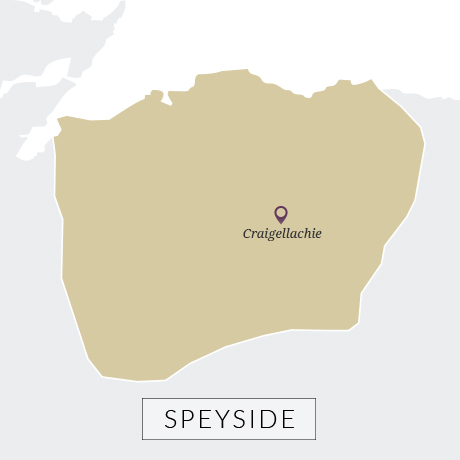Aberfeldy
The home of Dewar's World of Whisky.


The second form of sulphur comes from barley and is naturally produced during the whisky-making process. If you cut down the amount of copper available to spirit vapour the higher the sulphur levels in the new make will be. What appears to not have been understood is that this sulphur disappears in time. It acts as a marker; an indication that once its cloak has been lifted a spirit will emerge either as meaty (Cragganmore, Mortlach, Benrinnes) or fragrant (Glenkinchie, Speyburn, Balblair, AnCnoc, and Craigellachie) In other words, sulphur can be desirable.
Craigellachie revels in its sulphurous nature. The first thing you smell as you enter the distillery is the notes of cabbage and beef stock. This is rising from the worm tubs which sit at the back of the distillery. It is the small amount of copper contained within them that helps to promote this character. They also add weight to the palate of the mature spirit.
Long fermentation has however fixed fruitiness within the spirit and this tropical/floral note emerges in the mature spirit. It’s this character: full, yet aromatic which has made Craigellachie a prized malt for blending: it has been a major contributor to White Horse since the late 19th century – with the result that it had to wait until 2014 to receive its promotion to the rank of front-line malts.

The village of Craigellachie was an important hub in whisky’s history as it was here, in 1863, that the railway lines from Lossiemouth (north), Dufftown (south), Keith (east), and the Strathspey Railway (south west) met, allowing rail transport between Glasgow, Edinburgh and Perth within the region.
Craigellachie’s distillery, however, was only built in 1890. Designed by Charles Doig, it was built with all modern conveniences with the express intention of making a lighter fruitier character than the older distilleries – one of the earliest descriptors of Craigellachie mentions pineapple as a desireable aroma.
Its owners were Sir Peter Mackie (of White Horse) and Alexander Edward who though only 25 when the distillery was built was already the lessee of Benrinnes. He also owned a local brickworks, built new villas in the growing village and, in 1896, constructed a large hotel. He would go on to build Aultmore, Dallas Dhu and Benromach.
Edward pulled out in 1900 to concentrate on those other interests, leaving Craigellachie in White Horse’s ownership. It was the core malt within Mackie’s Old Smuggler and Old Gaelic brands which were hugely successful in Australia and South Africa.
White Horse – and therefore Craigellachie – became part of DCL but when that firm merged with IDV in 1998, the Monopolies Board insisted that it sell off some of its estate – specifically John Dewar & Sons and five distilleries, one of which was Craigellachie. They were snapped up by Bacardi which still owns the distillery.


 Distillery & brand
Distillery & brand
A producer of malt for blending, Royal Brackla became the first Scotch to obtain a Royal Warrant.